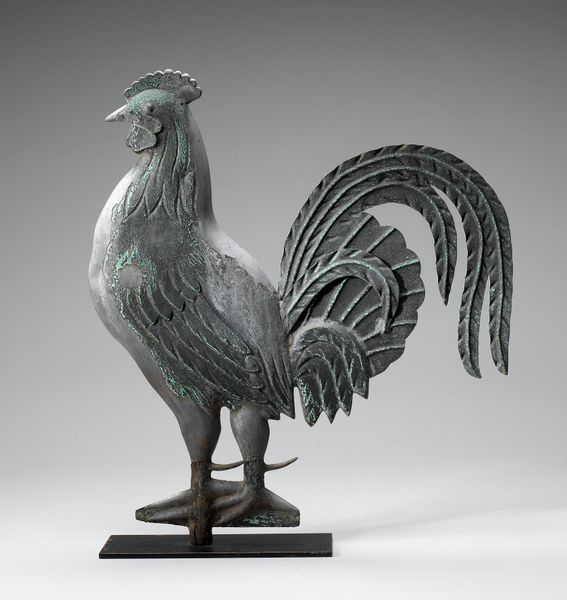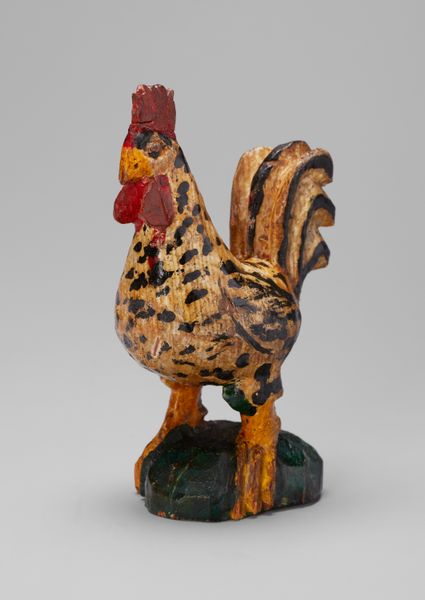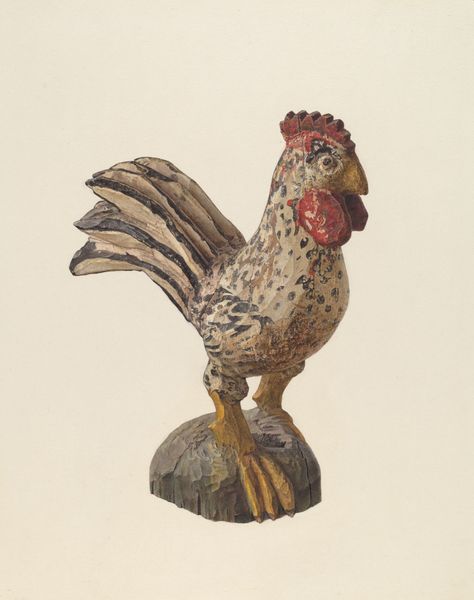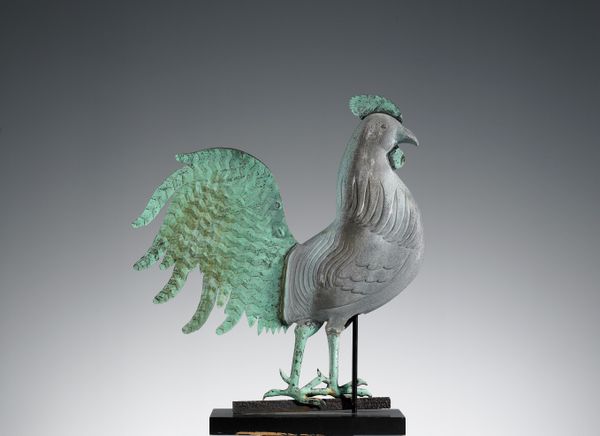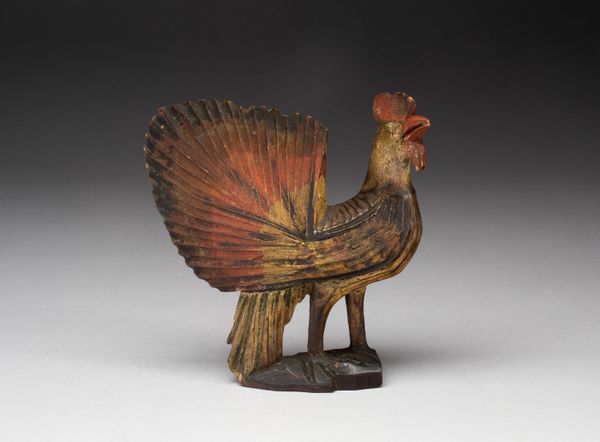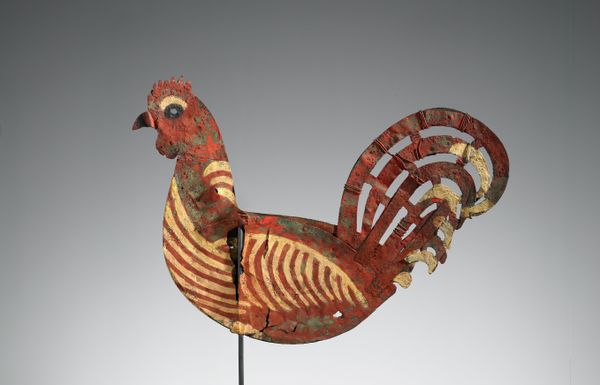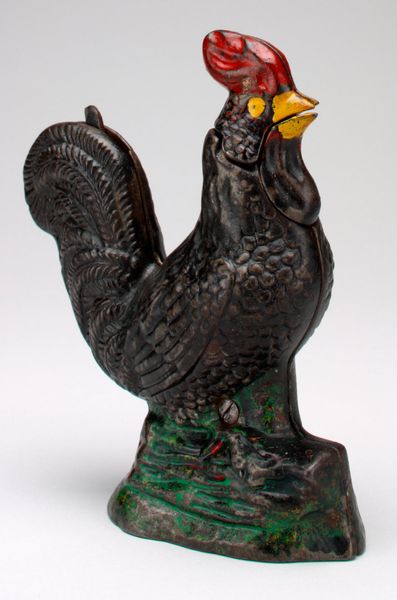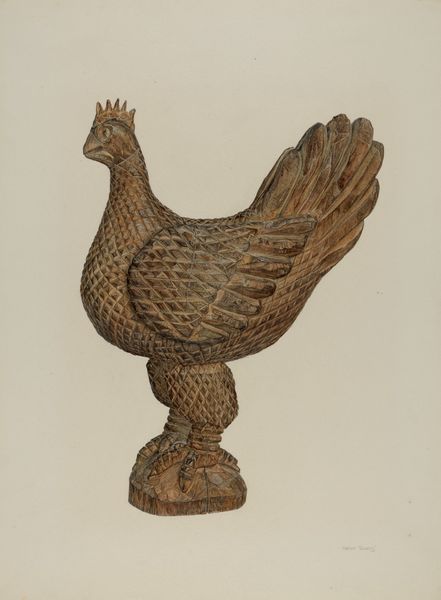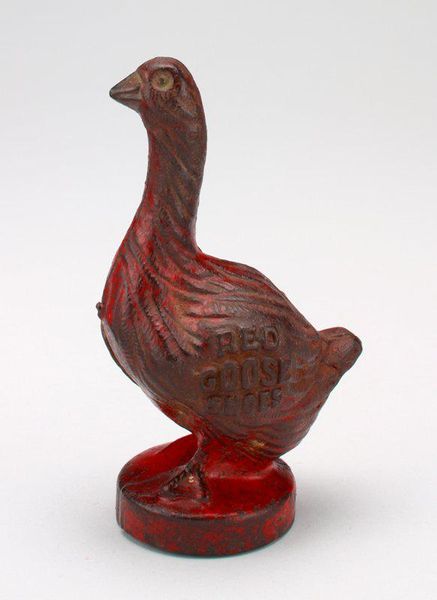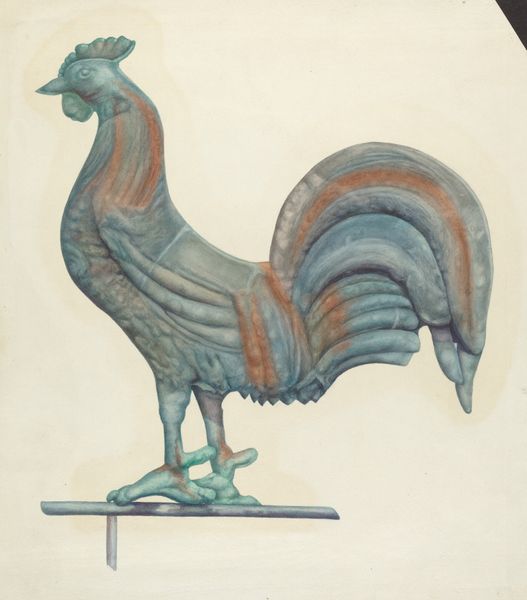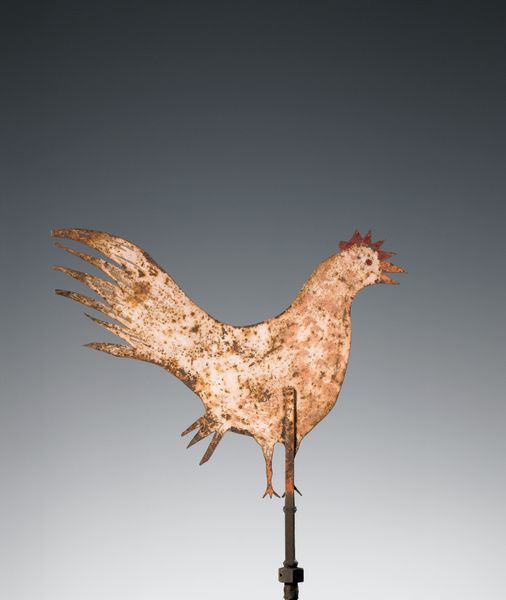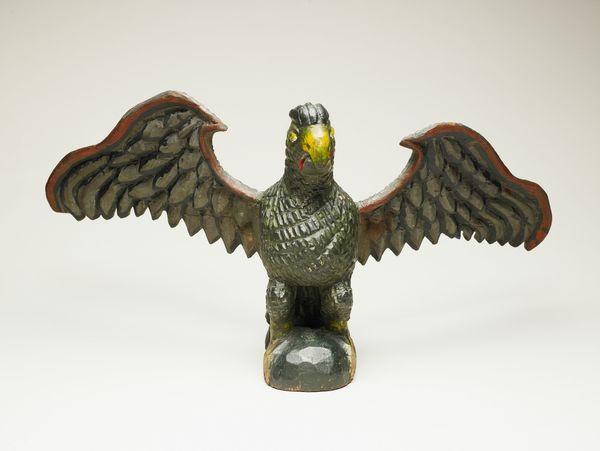
metal, sculpture
#
animal
#
metal
#
sculpture
#
sculpting
#
sculpture
#
united-states
#
decorative-art
Dimensions: 27 1/2 x 27 3/4 x 4 7/16 in. (69.85 x 70.49 x 11.27 cm)
Copyright: Public Domain
This Hamburg Rooster weathervane was crafted by L.W. Cushing & Sons, sometime between 1872 and 1933. Weathervanes like this one were not only functional objects but also symbols deeply embedded in American identity. During this period, the United States was undergoing significant transformations, including rapid industrialization, urbanization, and immigration. Rural America, however, remained a stronghold of traditional values and agricultural life. Weathervanes, often adorning barns and farmhouses, served as emblems of self-sufficiency and a connection to the land. The rooster, in particular, carried connotations of vigilance, courage, and rural pride. But it's important to remember that this image of rural America often obscured the complex realities of race and class. While weathervanes might have symbolized prosperity and independence for some, many others were excluded from this vision due to systemic inequalities. The rooster can be seen as a symbol of a dominant, often white, agrarian ideal, overlooking the contributions and struggles of marginalized communities in shaping the American landscape.
Comments
minneapolisinstituteofart almost 2 years ago
⋮
Nineteenth century American farmers developed an astonishing variety of poultry crossbreeds - highly specific kinds of birds raised for meat, eggs, or even appearance. Weathervane makers catered to this popularity by developing breed specific vanes such as this Hamburg Rooster. This rooster's magnificently swept back comb and tail would have given the illusion of a brisk wind, even on a still day.
Join the conversation
Join millions of artists and users on Artera today and experience the ultimate creative platform.
